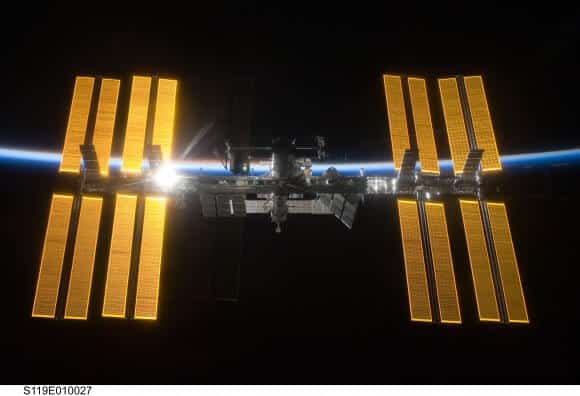The leak was in the same place where a previous leak was discovered in 2007 and was only repaired in 2012 with a spacewalk. NASA is investigating a connection between the two cases

Astronauts on the International Space Station spotted small white flakes floating inside the International Space Station's P6 component yesterday (Thursday, May 9). and determined that an ammonia-based coolant leaked from the cooling system. Although the coolant is essential for the regular operation of the International Space Station, NASA says at this stage that the crew is not in danger.
"It's a serious situation," said current station commander Chris Hadfield, "but upon inspection by the staff members and experts from the ground, it seems that the issue has stabilized. "
The ammonia is used to cool the electronic components in the solar collectors that supply electricity to the station's systems. NASA said crew members used hand-held cameras and mission control personnel used external television cameras to obtain additional images in an attempt to pinpoint the location of the leak. The combined data from the inside and outside and the reports of the crew led to the fact that the ammonia was leaking from this part of the cooling system.
Each component in the station has its own independent cooling loop connected to the solar array. A small leak was discovered in the same area in 2007 and the suspicion is that it was caused by a micro meteorite impact. In November 2012, two astronauts went on a spacewalk to fix the problem. They rewired some coolant lines and installed another radiator and the problem seems to have been fixed. NASA still does not know if the increased flow of ammonia that was discovered this week is from the same leak, which was not visible during the spacewalk.
Early analysis by heat control system experts indicates that the leak could cause one cooling loop to shut down within days. They are now developing detailed plans to reroute the loop to other power channels to preserve its operation. Among other things, the station's robotic arm equipped with a camera will arrive in the area to better locate the location of the leak.
Three crew members, Chris Hadfield, Tom Marshburn and Russian Roman Romanenko are scheduled to leave the station on Monday May 13 and return to Earth in their Soyuz spacecraft. Hadfield asked to check whether this leak could affect their departure from the docking station. As of writing these lines, he has not yet been given an answer, but most likely they will not be prevented from leaving the station.

One response
A. already fixed.
B. They talk about the fact that the amendment allows the continuation of the scientific-research activity. But this is a lie - there is no such activity, and the talk about research was about convincing Congress to allocate funds.
third. The station is a very important engineering experiment, and its true essence needs to be understood.